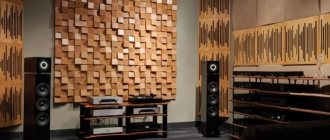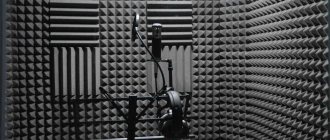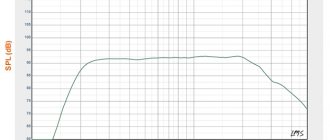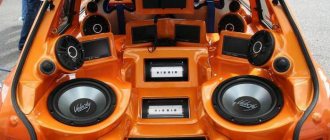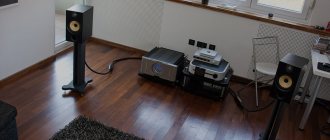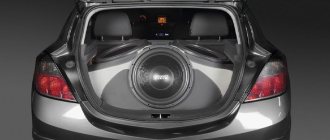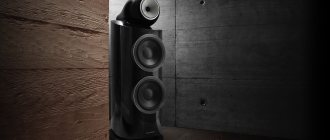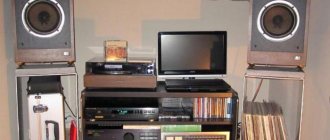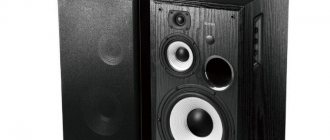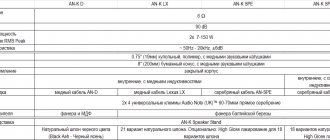Not everyone knows the concept of a bass trap. Ignorant people will not even immediately understand that we are talking about sound waves. Foam rubber bass traps are special structures that are capable of absorbing sound energy in the low range. Acoustic foam rubber for walls and ceilings copes with this task quite well, but bass traps made of foam rubber are much better at catching the lower frequencies of sound waves.
It is in this area that most recording studios have serious gaps. Lows are quite difficult to catch, but they need to be controlled. Otherwise, instead of high-quality sound, you will get acoustic chaos. Bass traps made of foam rubber operate on different ranges, for which they are recognized as multifunctional devices for effective sound insulation.
They help solve a lot of problems:
- Responsiveness to speaker noise
- standing wave
- fluttering echo
- room vibrations
Bass traps made from acoustic foam work quite simply. Low frequencies accumulate in the corners of the room, especially in triangular ones. The sound wave reaches the junction between the surfaces, hits them like a sea wave hitting a rock, and returns in a thousand small splashes. As a result of this process, the sound is distorted and does not allow making a high-quality audio recording. If a sound wave breaks on a hard surface, causing sound to be reflected, an energy absorber must be used. Bass traps for recording studios have an elastic and porous structure. The foam rubber structure absorbs a charge of sound energy and dampens low-range frequencies. Almost nothing is reflected, which results in a rich sound.
Bass traps for recording studios
Basically, products of this type are installed in announcer booths and music studios. Bass traps made of acoustic foam are attached to the corners of rooms intended for recording, live performances or listening to audio files. By the way, conference rooms, meeting points and concert studios are also suitable for using bass traps. In principle, foam bass traps can be used anywhere where high-quality sound is required. In the space of one room, sound waves are reflected from the surface and overlap each other. This creates a “resonance” effect. For this reason, we hear echoes and hums. To eliminate these sound imperfections, people use bass traps for recording studios. They are made of acoustic foam, are lightweight and have a high level of ergonomics.
Resonating absorbers
Resonating absorbers
(
tuned traps, narrow-band absorbers
) do the opposite...
Minimizing problems with bass frequencies, but ignoring everything in the mid/high range.
Unlike porous traps, which work better when placed far away from walls...
Resonating absorbers (sometimes called pressure absorbers) work near walls where sound waves collide because that's where the pressure level is highest.
Which is good because it means they take up much less space in the room.
2 standard types:
Both systems can
work well in the studio, but diaphragm absorbers are much more popular because they are easier to design and take up less space.
Types of Bass Traps
There are several types of bass traps. They vary in shape, relief and size. Types of bass traps can be divided into 2 main categories:
- corner bass traps (good absorption of low-range frequencies)
- flat bass traps (leave an empty space between the panel and the wall, but are more economical)
Each client must decide for himself which type of bass trap is right for him. In this case, you should not chase savings; it is better to carefully think through your goals and objectives regarding absorbers. Flat bass traps are pleasing with their price solution, but angular bass traps elegantly clean the “bottoms”. Some experts manage to combine them.
Please note that acoustic foam products have different properties. For example, wall and ceiling panels absorb mid and high frequencies, while bass traps made of acoustic foam absorb lower frequencies. They have different shapes and internal structures, although they are still just polyurethane foam. What happens if you change the special foam rubber to furniture or household foam? You will get nothing but disgusting sound in your studio. It is important to understand that conventional polyurethane foam will never replace acoustic foam. Buy bass traps made of foam rubber in the showroom of the Echo Design company. We sell only certified high quality products.
How do they work together
In most professional studios, porous and diaphragm absorbers work together as each has its strengths and weaknesses.
Simply by changing their ratio, you can control the type of sound you want.
Some studios are even coming up with “hybrid” bass traps that use both.
One way to do this is to place a porous absorption behind a resonating panel. This will expand the range of absorbed frequencies, but the side effect will be that the mid-frequency absorption will be worse.
Now that you know the options, you need to choose one...
Acoustic recording booths
Some clients prefer not to bother with installing acoustic foam and bass traps at all. They choose the most optimal solution - acoustic recording booths. The Echo Design company offers a wide selection of designs for professional activities. Our acoustic recording booths are ordered by musicians, announcers, bloggers and other creative professionals. The customer does not have to rack his brains over installation. Experienced designers have created a number of ready-made designs that provide optimal acoustic treatment. The client just needs to choose a model and get his dream in the near future. Acoustic recording booths are the ideal solution. They come in different colors, areas and types of acoustics. Some models use bass traps.
Mid frequencies. Diffusers (diffusers). The essence is in the form
The use of diffusers is aimed at improving the amplitude-frequency characteristics in the conditions of the existing room. Their use makes it possible to reduce or compensate for excess sound strength at certain frequencies, which improves intelligibility.
The work of any type of diffuser is aimed at changing the equality of the angle of the incident and reflected beam inherent in nature. However, the implementation of this principle may differ depending on the purpose.
Let us conditionally divide all diffusers into symmetrical and asymmetrical. Thus, we will call symmetrical diffusers those aimed at creating a uniform sound field, while asymmetrical are those aimed at getting rid of direct reflections. Let's look into these subtleties.
Schroeder diffuser - the most popular diffuser
Let's start with symmetrical diffusers. The most popular example of this type is the Schrader diffuser. This is a device consisting of alternating ribs and panels of varying depths perpendicular to them, calculated according to a certain mathematical model (which describes the ratio of the width and depth of the cell).
When incident at the same angle, the sound wave enters the pockets created by the ribs and panels, but exits each at a different time and at a different angle, having undergone a different number of reflections. Thus, the directional pattern of the reflected sound becomes cylindrical, and the energy of the reflected sound decreases depending on the sound-absorbing properties of the material and the number of reflections.
However, there is a very important point here - all this works only when the sound wave (beam) does not fall on the diffuser panels at a right angle. In this case, the diffuser will be absolutely useless: everything that falls on it at a right angle will be reflected back in the same way.
That is why such diffusers are placed on the sites of the first reflections that the sound wave reaches at an acute or obtuse angle - this is the front wall between the speakers and the surfaces lateral to the listener, as well as the wall behind the listener. All this is done to achieve a sound field in which the strength of the reflected sound will be reduced and the strong dominance of certain frequencies will be eliminated.
In addition, an increase in reverberation time will be a positive effect for listening to music. Having reflected several times from the panel and diffuser fins, the sound will return to us later than if it were simply reflected from a flat surface. By closing our eyes, we can cover our room with at least a couple of square meters, and if the coverage area is large, even our heels.
Sound reflection from different types of diffusers
For sound incident at right angles to a surface, there are asymmetrical diffusers designed to eliminate direct reflection. The simplest example of such a diffuser is a curved sheet of plywood mounted on a wall. The sound reflected from it will disperse chaotically in different directions, but will certainly not return to where it came from.
If your room has a fluttering echo effect, then asymmetrical diffusers located on the walls exactly opposite the loudspeakers of the acoustic systems will help cope with the problem. In principle, the role of an asymmetrical diffuser can be performed by any structure that does not have external surfaces located in the same plane as the wall on which it is installed.
A positive effect in the fight against the fluttering echo of an asymmetrical diffuser compared to an absorber will be that we will have a slight effect on the frequency response (within the limits of the sound-absorbing properties of the material from which the diffuser is made). However, you need to understand: we can talk about efficiency only when the device can be created on the basis of calculations (this mainly applies to symmetrical diffusers), and these calculations, in turn, are confirmed in practice.
When thinking about using a diffuser, imagine what will happen to the sound wave incident on it, what is the reason for its design and how appropriate it is for your purposes. The aesthetic component can also play an important role. As a domestic solution, the most successful option would be to use open-type bookshelves; you can also use a stationery cabinet, a shelf with disks, etc.
Characteristics of Bass Traps
One of the main characteristics of a bass trap is its size. You should definitely consider the type of speaker system you plan to use for your studio. If sound insulation is installed using “wave” foam rubber, then traps are not needed, but the pyramidal relief requires their use. You need to think about the distribution of space. The characteristics of bass traps are closely related to the analysis of the total area of the room.
Be sure to pre-inspect the room where the bass trap will be installed. To soundproof a concert hall, you will need large bass traps, and smaller ones for a home theater. The characteristics of bass traps also include color scheme. You should definitely pay attention to this point. The showroom offers a rich palette that will help create a unique studio design. You can match the bass trap and acoustic foam to match the corporate colors. For a creative person, a distinctive sign will never be superfluous.
Advantages of acoustic foam bass traps:
- hypoallergenic
- environmental friendliness
- aesthetic appearance
- unpretentiousness
- quick installation
- large selection of models and colors
Choosing YOUR strategy
And if it is poorly assembled... then it can be completely ineffective and even cause
problems by resonating at the wrong frequency.
On the other hand, porous absorption is a “one-size-fits-all” solution that is also much cheaper.
Assuming that you are already inclined towards porous absorption, the next question is to use
Angled bass traps are heavier, which as we learned earlier is one
one of the ways to curb low frequencies.
Flat bass traps use a different
a method of absorbing bass by leaving an open air gap between the panel and the wall. This allows you to cover more space with less material.
Therefore, next... I will talk about the best models of each option.
If you need flat traps:
Bass traps for home theater
Sound absorbers are used not only in recording studios. Some customers love quality cinema so much that they are willing to buy bass traps for their home theater. Foam rubber structures installed in the corners of the room will provide excellent sound. Extra hum and annoying echo will disappear from your life forever. The sound quality will be no worse than in a public cinema.
Porous absorbers
You've probably met them before, because especially at home
studios...
Porous absorbers
- the first thing people turn to when solving problems with room acoustics.
They can be made from materials such as:
They are effective in solving common problems such as:
Despite their flexibility in application, porous absorbers have one BIG disadvantage: they cannot absorb the lowest
frequencies, if they are not...
The problem is that few rooms can accommodate so much
places for acoustic treatment. That's why manufacturers make it very thick.
And since they are cheaper and easier to manufacture than resonant absorbers... it's obvious why porous absorbers account for 95% of the bass trap market.
Where to buy foam bass traps?
The Echo Design company professionally sells and installs acoustic foam rubber. In our showroom you can buy bass panels and acoustic foam. All products are certified. A safe transaction awaits you without financial risks. A detailed consultation will provide the opportunity to buy bass panels of the appropriate size and in the required quantity. New customers will certainly be pleased with the cost of bass traps. We supply from reliable manufacturers who provide a quality guarantee for their products.
| We will help you choose bass traps made of foam rubber for a specific room. Let's do the calculations. At the request of the client, the installation of bass traps will be carried out by experienced specialists who have repeatedly confirmed their high qualifications. Go to the company's catalog and place your order right now! |
Tabik.RU
Making your own bass traps!
Required material: PVA glue (needed for gluing joints in a wooden frame), screws (small for attaching the angle and large for attaching the cross posts), glass wool (it is recommended to take RockWool because it has the highest density. I think two packs will be enough : 50 cm wide, 1 meter long and 10 cm thick.). Also, to close the trap from the facade we will need carpet without a rubber base. It is also advisable to play it safe against glass wool falling out and buy, for example, a mosquito net. The rear side can be covered with agro-cloth (breathable fabric). Also in the process of creating bass traps the following will be used: corner plates for tightening the corners of the frame, fabric material for the side and top absorbers, aluminum corner 15/15/1.5mm, eight bolts with nuts to create a gap for the side absorbers, copper wire for hanging the frame , chain and screw-in loops for hanging the absorber from the ceiling. So let's go!
The dimensions of the corner bass traps were taken without any preliminary calculations; in general, it is desirable that in proportion they should be 2/3 of the height of the room. Let's saw!
Next you need to screw the connections to one board:
And finally we twist all the parts, add PVA to the corner joints without being greedy:
Next we insert spacers from the second 40/40 block. I would like to note that these semi-finished products are not made for bass traps, but for side absorbers and, therefore, there is only one spacer, because we use one sheet of glass wool.
I will note that there is no one more rack here....you need 3!! I made a mistake, I'm correcting it:
then I put a layer of padding polyester and a mosquito net on top of the fiberglass from the front part (attached to the frame with brackets):
Well, it came to the sheathing. I personally had two materials for covering: just thick material and thin carpet (without a rubber base). The latter was used for corners (eating bass) and the material for eating side and ceiling reflections.
Upside down bass trap:
In the next photo, the back side of the side absorber has already been hemmed
Well, this is what the sheathed panel actually looks like:
This panel is needed to dampen lateral early waves and should be located at a distance of 10 cm from the wall, so I installed limiters there in the form of a long bolt with a nut attached to the corner (I will screw it to the panel later).
Well, the actual bass traps are ready:
Up! Post it!
